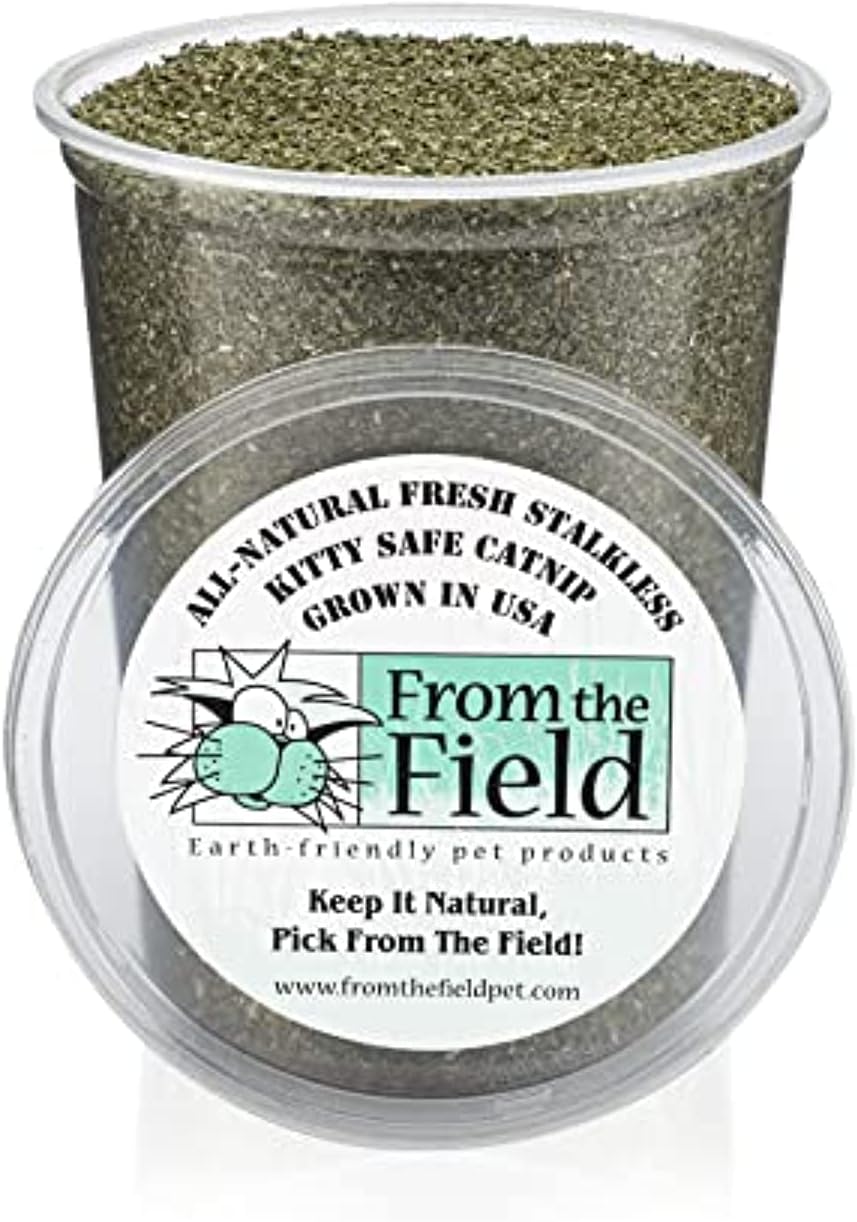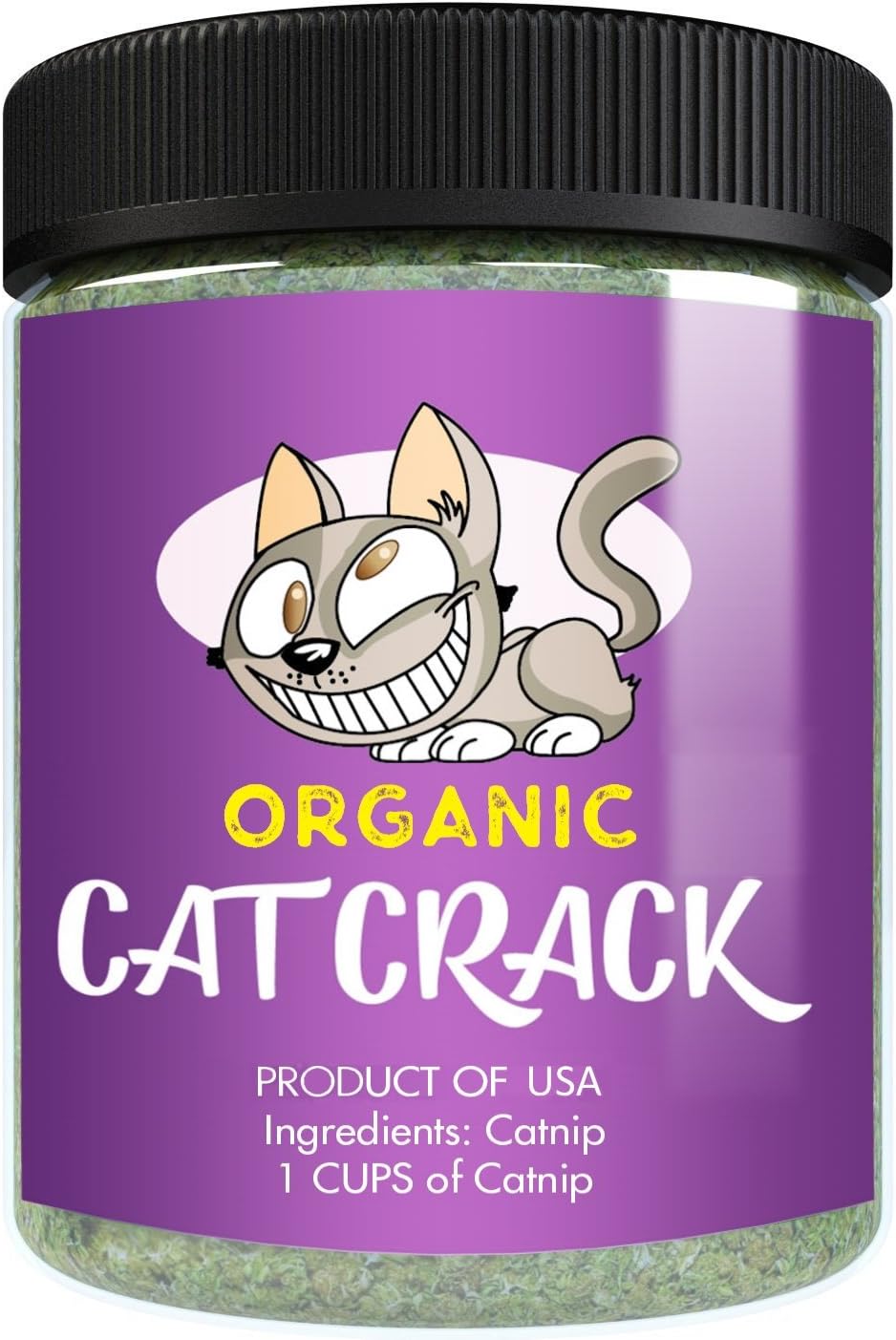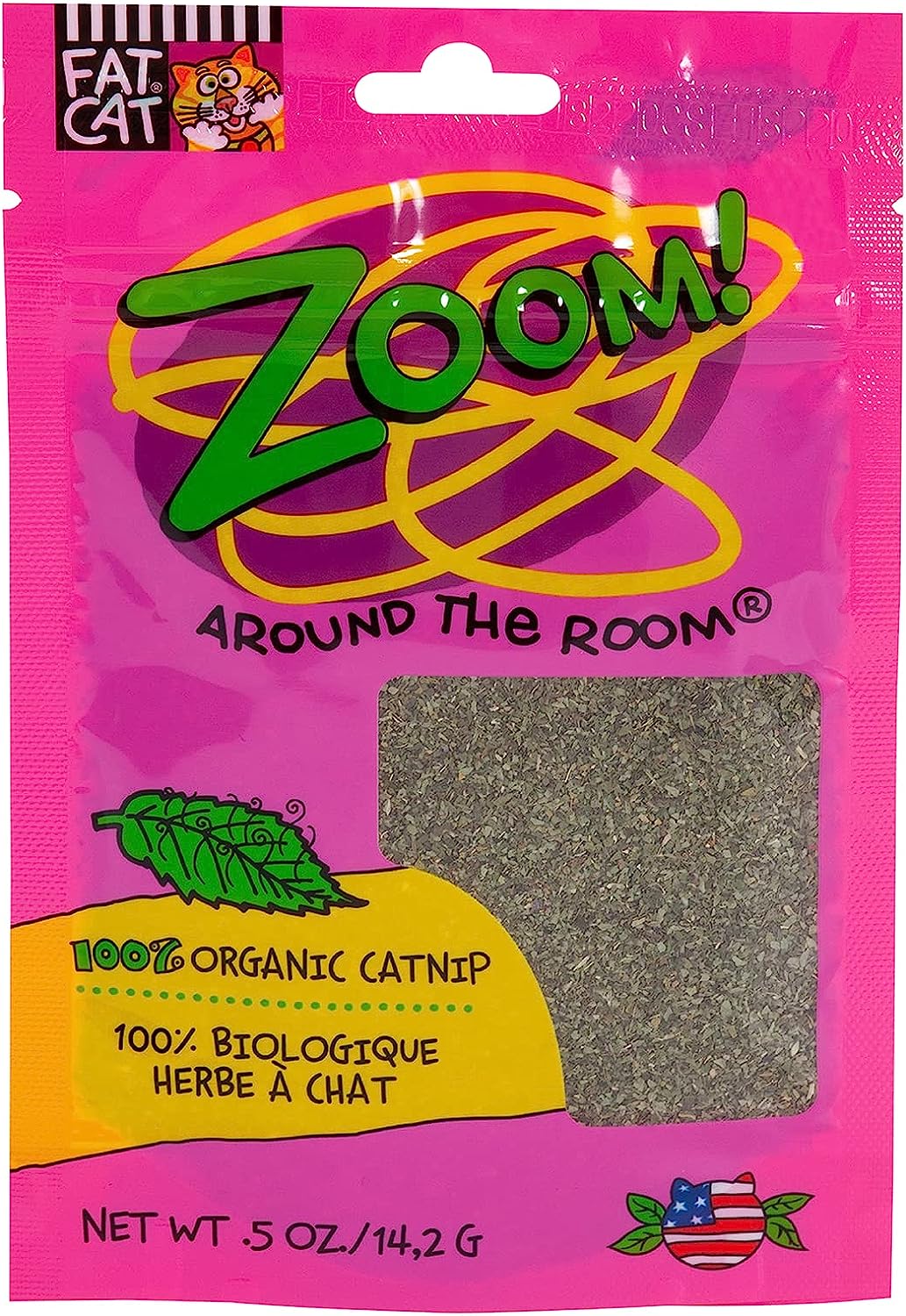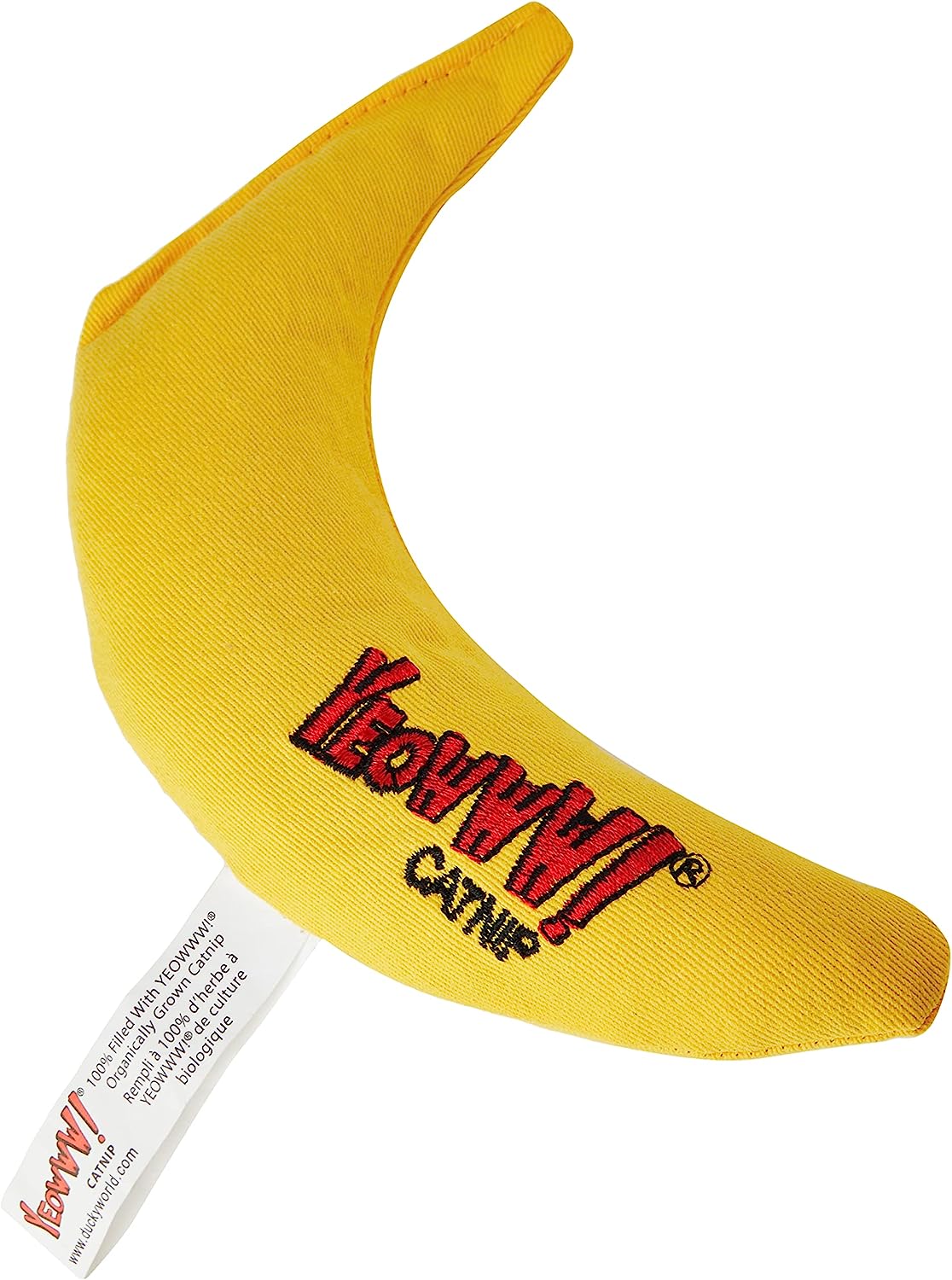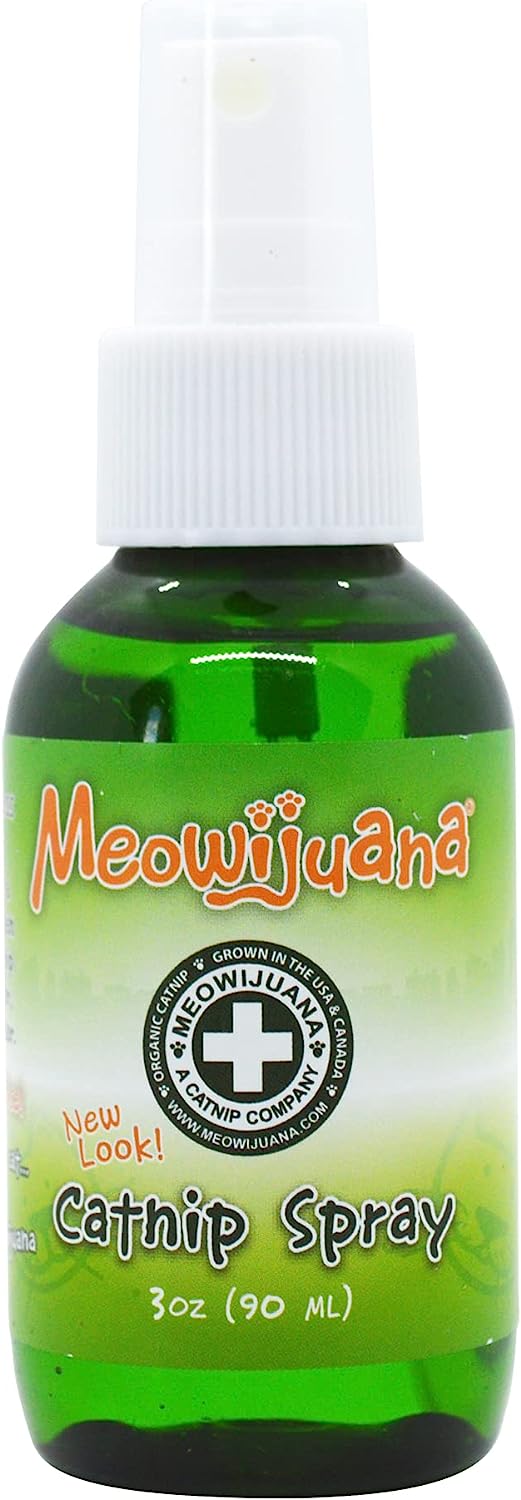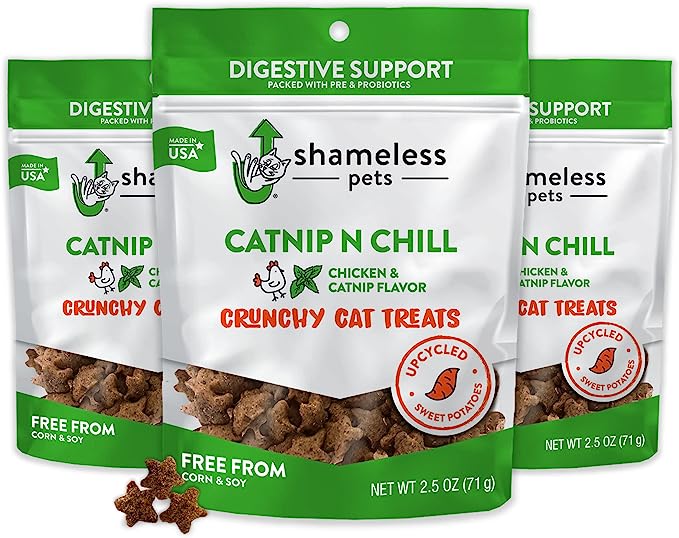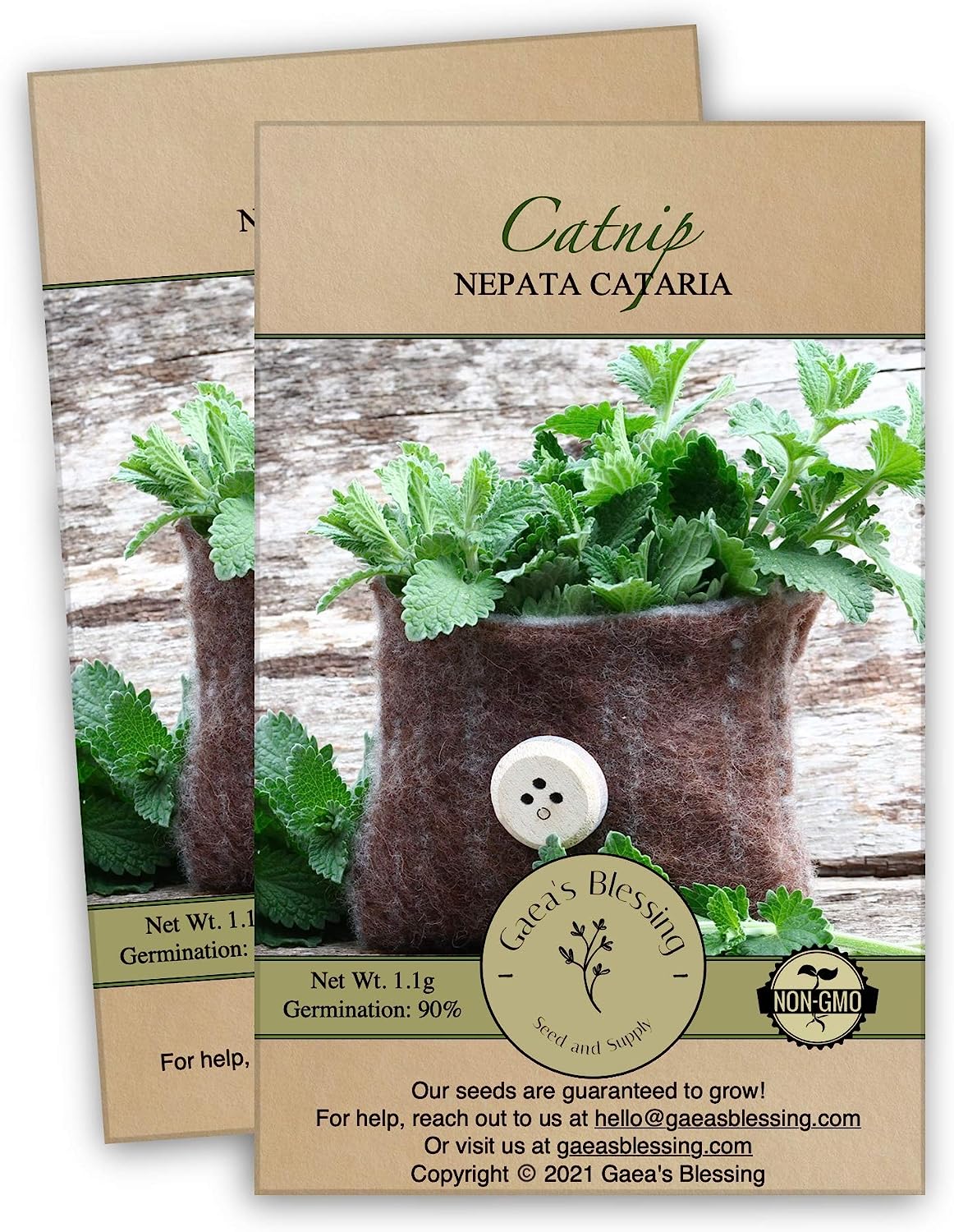iHeartCats is reader-supported. When you buy via links on our site, we may earn an affiliate commission at no extra cost to you.
Treat your feline to the best catnip and make their day! Catnip, derived from the Nepeta cataria plant, has a profound effect on most cats, inducing playful behavior and moments of pure bliss. However, with an abundance of products flooding the market, it’s essential to consider various factors before selecting the perfect option for your furry friend. After all, you want your purr child to have the safest fun possible.
In this article, we’ll delve into the world of the nip, exploring factors to consider, such as potency, sourcing, and organic options. Additionally, we’ll address frequently asked questions, providing clarity on dosage, potential side effects, and the best ways to introduce catnip to your feline companion.
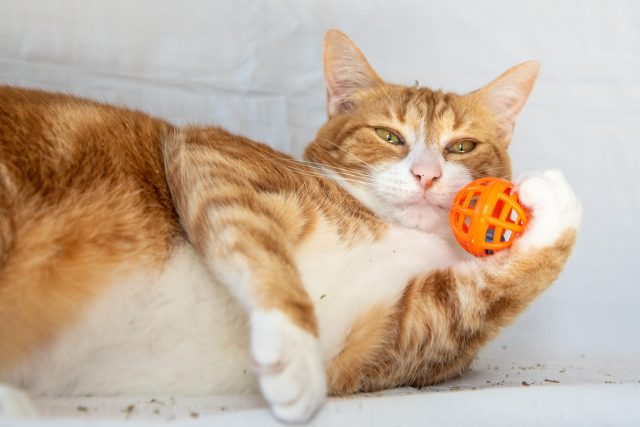
Factors to Consider When Choosing the Best Catnip
When selecting the best catnip for cats, there are several factors you should consider to ensure your feline friend gets the most enjoyment and benefit from it. Here are some key factors to consider:
Quality and Freshness
Look for high-quality options that are fresh and aromatic. The potency can diminish over time, so choose a reputable brand or source that guarantees freshness.
Organic and Natural
Opt for choices that are grown organically and free from pesticides or other harmful chemicals. Organic catnip is generally safer for your cat and reduces the risk of any potential adverse effects.
Source and Origin
Consider the source and origin. Catnip is an herbaceous plant naturalized to North America and grows prolifically in the USA. If possible, stick with American-grown catnip.
Drying Method
Catnip can be dried using various methods, including air drying, freeze drying, or dehydrating. Air drying is the preferred method as it helps retain more of the natural oils and potency. Avoid options that have been excessively processed or exposed to high heat.
Form
The fun cat treat is available in different forms, including loose leaves, dried flowers, sprays, and cat toys infused with catnip. If you can, avoid options with dried stems, as these can poke cats in their tender oral tissues. Cats may have individual preferences for the form they enjoy most, so you can experiment to see which form your cat responds to best.
Safety
Ensure your choice is safe for your cat to consume. While this cat-safe plant itself is generally non-toxic, some products may contain additives or fillers that could be harmful. Read the ingredients carefully and avoid products that contain substances that may be unsafe for cats.
Cat’s Preference
Ultimately, the best catnip is the one that your cat enjoys the most. Some cats may have a stronger reaction to it than others, so observe your cat’s response to different types and brands to determine their preference.
Remember, while generally safe and enjoyable for cats, not all cats respond to it in the same way. It’s always a good idea to introduce catnip gradually and in moderation and monitor your cat’s behavior to ensure they are having a positive experience.
Get Silly With the 8 Best Catnip Products for Cats
1 – From The Field Catnip Kitty Safe Stalkless Tub – Best Catnip Overall
A high-quality, chemical-free option, From The Field Catnip provides a potent experience for felines without the stalks. This smooth blend is excellent for finicky kitties and cats that eat it, as there are no sharp stems. While the price may seem high, you get a lot of product for your money. It’s a superior product cats love.
Pros:
- Highly attractive to cats
- Safe and free of stalks
- Chemical-free
- American product
- Highly-rated option loved by cats and their parents
Cons:
- Higher price compared to some alternatives
2 – Cat Crack Organic Catnip – Best Organic Catnip
The name says it all! Cat Crack Organic Catnip entices cats with its irresistible aroma and fresh, organic contents. With a high 78%+ Nepetalactone content, you can bet Cat Crack will make your kitty wild. And it’s watered with unadulterated Rocky Mountain snow melt for a clean and fresh catnip.
Pros:
- Entices even the most indifferent cats, top-tier quality
- 100% natural
- Resealable jar for easy storage
Cons:
- Potency diminishes quickly if not properly stored
3 – FAT CAT Organic Catnip – Best Budget Catnip
FAT CAT Organic Catnip offers a good balance of price and quality. And because it’s organic, you can trust you’re giving your cat a safe play experience. While it comes in a resealable zipper pouch, you may want to give it an extra layer of airtight protection to preserve freshness.
Pros:
- Good price-quality ratio
- Finely-ground
- No stems or stalks
- Effective for most cats
- Ideal option to test your cat’s reactiveness
Cons:
- Might not be the freshest option
4 – Yeowww! Catnip Toy, Yellow Banana – Best Catnip Toy
The Yeowww! Catnip Yellow Banana toy merges fun and function. It’s filled only with organic catnip and has a durable fabric exterior, so your cat can really give those claws a workout. The size of this wildly popular catnip banana makes it a great kicker toy too.
Pros:
- Fun design
- High-quality handmade construction
- Stands up to rough play
- Natural and nontoxic
- Blend of catnip flower
- Highly-rated cat toy loved by thousands of cats and their parents
Cons:
- Might be too large for smaller cats
5 – Meowijuana Premium Catnip Spray – Best Catnip Spray
This spray effectively mimics the appeal of catnip, making it perfect for enhancing toys or scratching posts. Use it to attract cats to a desired location, like a new cat tree or bed. Or, refresh older catnip toys to give them new life.
Pros:
- Convenient and mess-free
- Revives old toys
- No added ingredients
- Available in two sizes
Cons:
- Scent may not last long
6 – SHAMELESS PETS Crunchy Cat Treats Catnip N Chill – Best Catnip Treats
SHAMELESS PETS Catnip Treats are a unique combination of crunch, flavor, and catnip appeal. They’re crafted with wholesome and natural ingredients, all locally sourced in the USA. The bite-sized pieces are easy to handle and can be used for training or as a special reward. Made with chicken, catnip, and sweet potato, these best cat treats support healthy digestion and may help eliminate hairballs.
Pros:
- Made with organic catnip
- Uses misfit and surplus sweet potatoes
- Suitable for training or as a special reward
- Brand committed to sustainability and giving back
- Made in the USA
Cons:
- Flavor may be too mild for some cats
- Packaging may not be resealable
7 – Meowy Janes Silver Vine for Cats – Best Silvervine for Cats
An interesting alternative for cats who don’t react to catnip, Meowy Janes Silver Vine is often more effective at stimulating felines. Nearly 80% of cats react to silvervine and enjoy a stronger, longer-lasting experience. And because this is fine silvervine powder, it’s an easy way to treat your cat.
Pros:
- More stimulating than catnip for some cats
- No additives
- Resealable tin
- Fun alternative
- Powder form makes treating easy
Cons:
- More expensive than catnip
8 – Gaea’s Blessing Seeds – Catnip Seeds – Best Catnip Seeds
For green-thumbed cat parents, these seeds offer the opportunity to grow a fresh, potent plant. Germination can be a bit hit or miss. By growing your own with these non-GMO catnip seeds, you control all the factors and know exactly what you’re giving your cat. And if it’s your first time gardening, you’ll find it an easy herb to start with.
Pros:
- 90% pollination rate
- Adopters of the Safe Seed Pledge
- Made in the USA
Cons
- Growing your own plants is never guaranteed
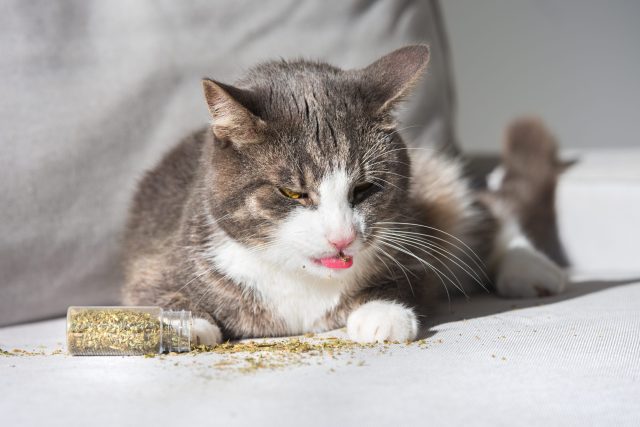
FAQs About Catnip
Is catnip safe for cats?
Yes, it’s non-toxic to cats and generally considered safe for cats, posing no significant health risks to cats. They can safely sniff it, eat it, or interact with toys containing catnip. And while generally safe, it’s always a good idea to monitor your cat’s behavior and observe how they respond to it. If you notice any unusual or adverse reactions, it’s best to discontinue use and consult your veterinarian.
Why do cats love catnip?
Cats love catnip due to its effect on their sensory receptors. The active compound in catnip, called nepetalactone, stimulates certain receptors in a cat’s nose, which triggers a behavioral response. The exact reason why cats are attracted to it is not entirely understood, but it is believed to mimic certain pheromones that cats find appealing.
When a cat sniffs or consumes catnip, it can produce a range of reactions, including sniffing, rubbing, rolling, purring, and increased playfulness. Some cats may become more energetic, while others may become more relaxed and sedated. These responses can vary depending on the individual cat and the way they interact with it.
It’s important to note that not all cats are affected by catnip. Sensitivity to catnip is inherited, and approximately 50-75% of cats exhibit a response to it. Kittens under the age of three to six months may not be affected until they reach sexual maturity.
It’s a safe and non-addictive substance for cats, and its effects usually last for around 10 to 15 minutes. Afterward, cats typically become temporarily immune to its effects and may not respond to catnip again for a period of time, typically a few hours.
RELATED: The Hidden Natural Health Benefit Fresh Catnip Offers Your Kitty
Should catnip be organic?
Preferably, yes. Catnip should be organic to provide the safest possible experience for your cat. Organic catnip is grown without the use of synthetic pesticides, herbicides, or fertilizers, which can reduce the risk of exposing your cat to potentially harmful chemicals. By selecting organic options, you can support sustainable agricultural practices that are generally considered better for the environment.
However, it’s important to note that whether your choice is organic or not, it should be safe for cats as long as it’s sourced from a reputable supplier. If you’re concerned about the quality or potential presence of harmful substances in catnip, it’s always a good idea to purchase from trusted brands or suppliers who prioritize quality and safety in their products.
What’s the difference between catnip and silvervine?
Catnip and silvervine are both plants that can elicit similar responses in cats, but they come from different botanical families and contain different active compounds. Here are the main differences:
- Botanical Origins: Catnip, also known as Nepeta cataria, belongs to the mint family (Lamiaceae). Silvervine, scientifically called Actinidia polygama, belongs to the Kiwi family (Actinidiaceae). They are distinct plants with different appearances.
- Active Compounds: The active compound in catnip is nepetalactone, which is primarily responsible for the behavioral responses in cats. Silvervine contains actinidine and dihydroactinidiolide as its main active compounds. These compounds can have a similar effect on cats as nepetalactone does.
- Sensitivity: While around 50-75% of cats are responsive to catnip, the sensitivity to silvervine is relatively higher. It’s estimated that about 80% of cats respond to silvervine, making it potentially more effective for cats that do not show a strong reaction to catnip.
- Intensity and Duration of Response: The reactions to silvervine can be more intense and prolonged, with cats displaying behaviors such as rolling, rubbing, drooling, vocalization, and increased playfulness. The effects of silvervine can last longer than catnip, ranging from 10 to 30 minutes.
- Availability: Catnip is more widely known and commercially available. It can be found in various forms, including dried leaves, sprays, and cat toys. Silvervine, although gaining popularity, may be relatively less common and not as easily accessible as catnip. However, you can find silvervine products, such as dried powder or sticks, specifically made for cats.
Some cats may be more responsive to one plant than the other, while others may enjoy both equally. It can be a matter of personal preference and experimentation to determine which plant your cat responds to more positively.
Should cats have catnip every day?
No, cats should not have catnip every day. While catnip is generally safe for cats, it’s best to use it in moderation to maintain its effectiveness and prevent overstimulation. Daily exposure to catnip can lead to a diminished response over time, as cats can become temporarily immune to its effects. It’s recommended to offer it as an occasional treat or during playtime to provide stimulation and enrichment for your cat. By using it sparingly, you ensure your cat continues to enjoy its effects and prevent any potential habituation or excessive reliance on it.
Should I store catnip in the freezer?
The answer here is a divided one. Some sources insist putting catnip in the freezer can preserve potency. Others say the freezer can degrade potency. Whatever method you choose, follow these guidelines for proper storage as well:
- Choose an airtight container: Place catnip in a sealed container to protect it from moisture, air, and light, which can degrade its potency.
- Store in a cool, dry place: Find a cool and dry area in your home to store. Avoid exposure to direct sunlight, as it can degrade the active compounds.
- Check for freshness: Over time, catnip can lose its potency. Periodically check your cat’s stash for any signs of deterioration, such as a faded color or loss of aroma. If it appears less potent, consider replacing it with fresh catnip.
By storing catnip properly in a cool, dry place, you can maintain its quality and ensure it remains effective for your cat’s enjoyment.
How do I grow catnip?
If you want to give your cat a fresh and fun experience, get them a catnip plant from your local nursery. Or, if your thumb is green, growing catnip is relatively easy and can be done both indoors and outdoors.
Here are the basic steps to grow catnip:
- Select a location: Catnip prefers well-draining soil and plenty of sunlight. Choose a sunny spot in your garden or a location near a window if you plan to grow it indoors.
- Obtain seeds or seedlings: Catnip can be grown from seeds or purchased as seedlings from a nursery or garden center.
- Prepare the soil: If growing outdoors, ensure the soil is loose and well-draining. If the soil is heavy or compacted, amend it with compost or well-rotted organic matter. For indoor cultivation, use a potting mix specifically formulated for herbs.
- Sow the seeds or plant seedlings: If using seeds, follow the instructions on the seed packet for proper sowing depth and spacing. If using seedlings, dig a hole slightly larger than the root ball and gently place the seedling in it. Cover with soil and pat it down.
- Watering and care: Water plants regularly, keeping the soil consistently moist but not waterlogged. Avoid overwatering, as excessive moisture can lead to root rot. Once established, catnip is relatively drought-tolerant. Trim the plant periodically to encourage bushier growth.
- Harvesting: Catnip can be harvested once the plant reaches maturity, typically in mid-summer. Harvest the leaves and stems by cutting them close to the base. Dry the harvest by hanging it in a well-ventilated, dark area until fully dried. Store the dried catnip in airtight containers away from direct sunlight.
Catnip is a perennial herb, so with proper care, it can continue to grow and produce foliage year after year. Growing catnip provides an excellent source of enrichment for your cat and can be used in toys, as a treat, or to make homemade catnip sprays.
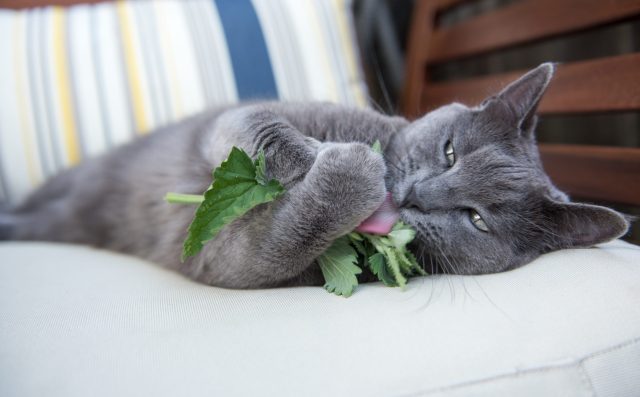
Final Thoughts
When it comes to the best catnip, there are a variety of options available to satisfy even the most discerning feline. By considering factors such as quality, source, and form, you can ensure a delightful experience for your furry friend. Remember, not all catnips are created equal. Ultimately, a well-stocked supply of high-quality catnip will undoubtedly bring joy, entertainment, and relaxation to your beloved kitty, making it an essential addition to any cat parent’s arsenal.
[templatera id= “3493224”]

